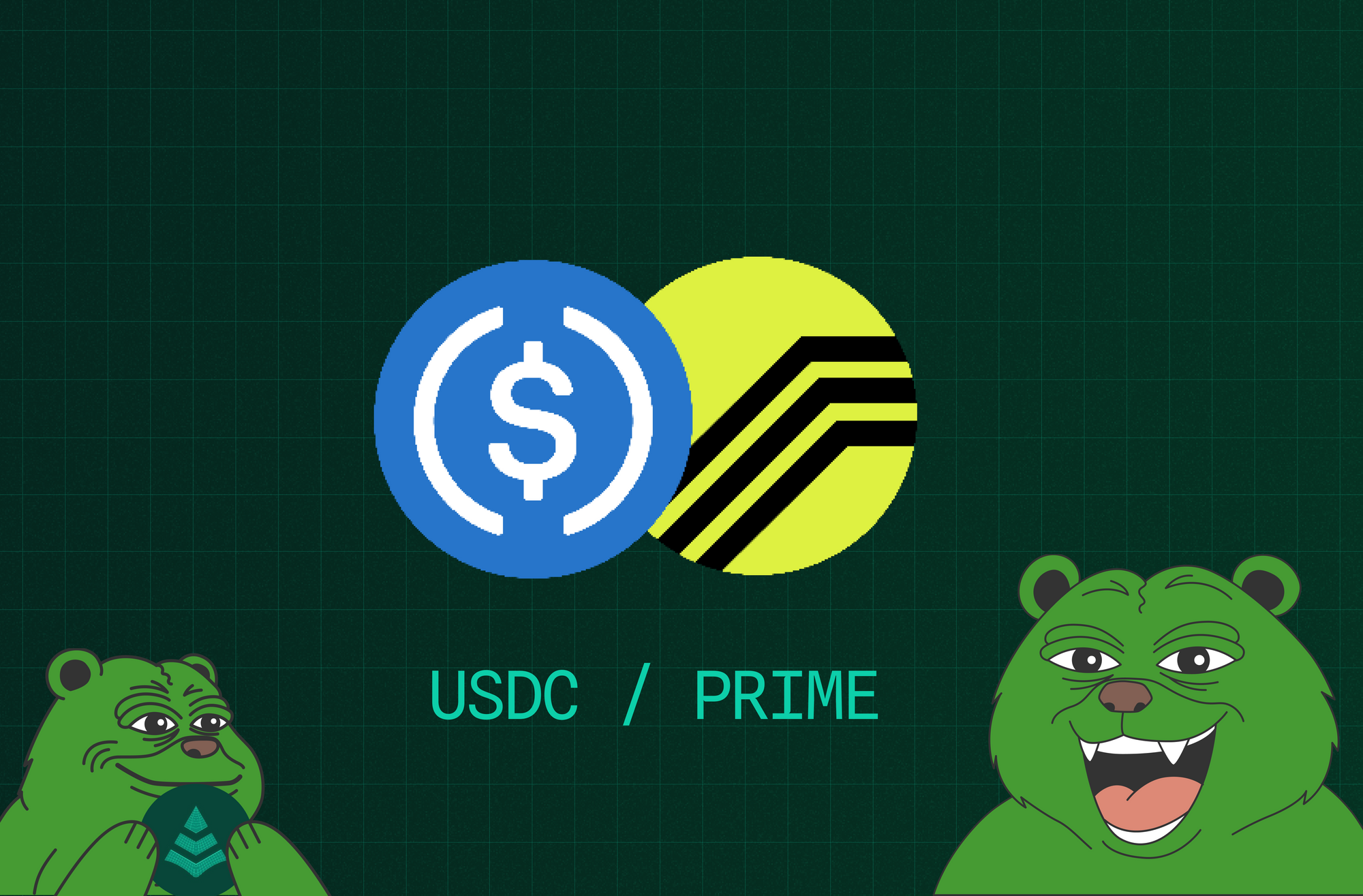What Do I Earn If I Lend Against $PRIME?

Teller opens up new ways to earn real yield from long-tail assets like $PRIME by supplying USDC to borrowers who put $PRIME up as collateral. Traditionally, crypto lending has centered around major assets like BTC, ETH, and USDC. Most protocols avoid niche tokens due to liquidity risk or lack of demand.
Teller changes that.
By enabling isolated, overcollateralized lending pools for long-tail tokens like $PRIME, Teller lets lenders earn interest by supplying USDC—while borrowers unlock liquidity using $PRIME as collateral.
No token emissions, no impermanent loss, no active management.
Here’s How It Works
The Teller protocol uses a simple, transparent flow:
- Lenders supply USDC into a time-based lending pool.
- Borrowers post $PRIME as collateral to borrow USDC.
- When a borrower repays, lenders receive their principal plus interest in USDC.
- If a borrower defaults, the lender can claim the posted $PRIME.
Got Questions? Here Are the Answers
What if a borrower defaults? If the maturity date arrives and the borrower hasn’t repaid, the lender has the right to claim the borrower’s $PRIME collateral. Since loans are overcollateralized, the lender is protected, and the borrower risks forfeiting their locked assets.
What’s the average loan duration? Most Teller loan durations are 1, 3, 7, or 30 days. Borrowers can also roll over loans by repaying and reborrowing, as long as there’s liquidity in the pool.
Are Teller loans affected by impermanent loss? No. Impermanent loss only applies to liquidity providers in AMMs like Uniswap. Teller lenders are not providing liquidity to a trading pair—they’re lending a single asset (USDC) and earning interest from borrower repayments.
How do I withdraw my funds? Lenders can withdraw their principal and earned interest after the loan is repaid. If the loan is still active, funds are locked until it matures or the borrower pays it back.
What’s the Yield?
Yield on Teller comes directly from borrower interest—not token emissions or liquidity farming.
Returns vary depending on borrower demand and asset volatility. In the $PRIME pool, APRs for USDC lenders have ranged from 30% to 60%, depending on loan terms.
Interest is fixed per loan, paid in USDC, and credited back to the lender after repayment.
What Makes This Different From Other Protocols?
- Long-tail lending: Most protocols don’t touch assets like $PRIME. Teller builds custom lending markets for them.
- Time-based loans: No liquidations or margin calls. Borrowers must repay by the end of the term.
- Isolated pools: Each market is self-contained, reducing systemic risk.
Put USDC to Work With $PRIME as Collateral
For users holding USDC, lending into Teller’s $PRIME-backed pool offers a way to earn real, fixed yield while supporting new market structures.Explore the pool and see what your USDC can earn 👇
https://defi.teller.org/pool/0x4c4a5175626396f19ef109c620813fb37a01247a
